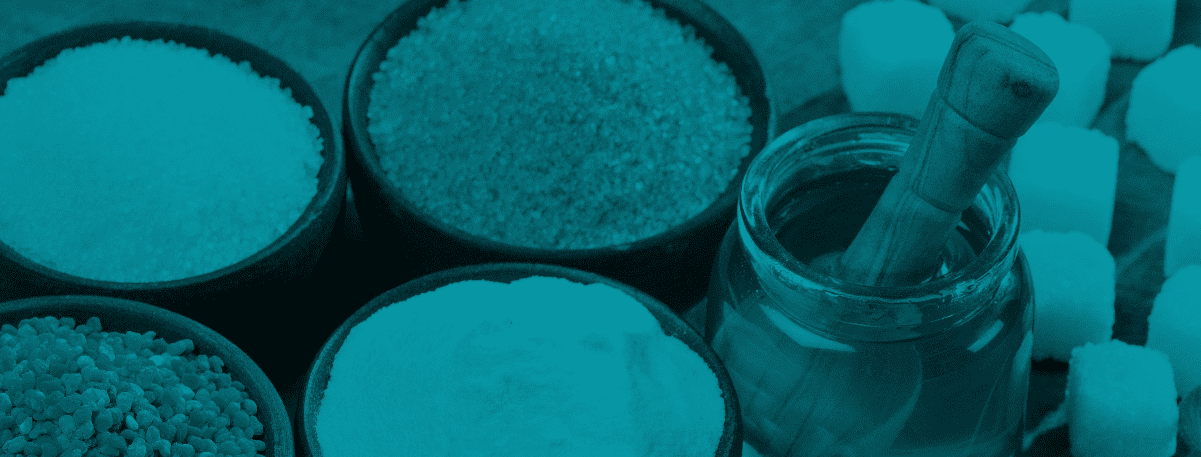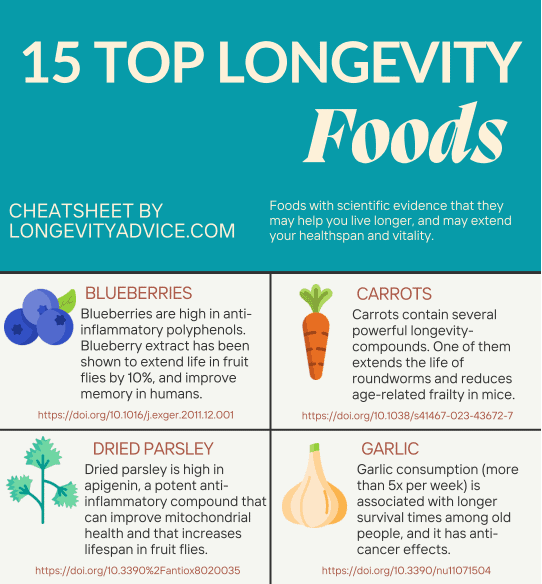We’re constantly evaluating and re-evaluating our food choices. Traditional table sugar, while tempting, is increasingly linked to various health issues that can curtail our lifespan, like obesity, diabetes, and even some forms of cancer. The quest is to find that delicious sweet spot – alternative sweeteners that satisfy those sugary cravings without compromising our longevity.
This guide delves into the world of alternative sweeteners, not just from a perspective of reducing calorie intake but also considering their impact on longevity.
We’ll explore a range of options, from natural sweeteners like stevia and monk fruit, known for their minimal impact on blood glucose levels, to the latest advancements in sugar alcohols and synthetic substitutes. We will dissect each sweetener through a longevity lens, discussing not just their relative sweetness, but also their metabolic effects and long-term health implications.
Below, I consolidated a list of sweeteners that are objectively better for your health than sugar.

What do I mean by that?
Each sweetener:
- Must have clinical trials demonstrating their safety
- Must not increase blood sugar levels
- Must not be linked to obesity
- Must not cause physical discomfort when consumed in moderate amounts
For fun, I added a sweet that you can purchase with each of the top alternative sweeteners.
These options are listed alphabetically.
1. Allulose (D-psicose)

Allulose is an alternative sweetener that naturally occurs in raisins, figs, maple syrup, wheat, and molasses. It has a low caloric content at .4 kcals per gram (sugar has four calories per gram) and offers a comparable sweetness to sugar.
Animal studies have suggested that allulose may help prevent and manage obesity and diabetes. For example, researchers had previously found that allulose was effective in short-term studies with diabetic rats–then, they wanted to see if it could help prevent or slow down the onset of type 2 diabetes over a longer period. They were particularly interested in whether allulose could help preserve the function of pancreatic β-cells, which are important for insulin production in the body.
In this 2015 study, they separated rats into three groups:
- Diabetic rats given water with 5% allulose.
- Diabetic rats given just water (control group).
- Healthy rats also given just water (healthy control group).
The researchers tracked the rats’ blood sugar, insulin levels, body weight, and body fat for 60 weeks. When the study ended, they examined the rats’ pancreas, liver, and belly fat for signs of disease or health.
The diabetic rats given allulose showed a lot of positive signs:
- They didn’t develop diabetes as severely or quickly as the control group.
- They had more stable blood sugar levels.
- They didn’t gain as much weight.
- Their HbA1c levels (a measure of long-term blood sugar control) were lower.
- They maintained healthier insulin levels.
- Their pancreatic β-cells (important for making insulin) were better preserved.
- They had less inflammation and less fat build-up, especially in the belly area.
In another human study, researchers discovered that allulose may be beneficial to liver health, particularly in reducing the risk of fatty liver disease.
Note that allulose can cause diarrhea when consumed in high amounts. One 2018 study found that when allulose is consumed at 0.5 grams per kilogram of the person’s body weight, it can start to cause abdominal discomfort; they recommend staying at .4 grams or under. In other words, if a 200-pound man wanted to moderate his allulose intake, he shouldn’t eat more than 36 grams of allulose in one sitting.
Try it: JOYRIDE Keto Gummies
2. Monk Fruit Sugar

In the southern part of China, a small round fruit called lo han guo, or “monk fruit,” grows on a vine with heart-shaped leaves. When extracted, monk fruit sugar is 100–250 times as sweet as traditional sugar, making it a popular alternative sweetener.
Because it’s so sweet, monk fruit is often mixed with other sugar substitutes like erythritol (which we didn’t deem safe enough in moderate quantities for this article).
Monk fruit has zero calories. While that suggests that it may help with weight management, we could find no studies at the time of this writing that have been conducted to prove whether or not that’s true.
Small-scale animal tests have suggested that monk fruit extract may slow cancer cell growth, but much more research is needed.
Most of the other research on monk fruit derives from the mechanism driving its sweetness: antioxidants called mogrosides. While research on mogrosides might suggest that monk fruit can prevent diabetes or suppress leukemia cell growth, I worry that it may cause readers to get caught up in nutritionism; I’d rather see tests examining monk fruit sugar specifically.
Try it: Lakanto Sugar Free Chocolate Truffles: Salted Caramel
3. Stevia (Reb-A)

The term “stevia” is a little misleading as a sugar substitute.
Stevia is a plant otherwise known as candyleaf, sweetleaf, or sugarleaf, that grows natively in Brazil and Paraguay. Processing and refining stevia leaves results in rebaudioside A (Reb-A), which is known colloquially as “stevia,” the sweetener you can buy on local grocery shelves. Reb-A is 200 times the sweetness of table sugar. Many popular brands, like Stevia in the Raw and Truvia, mix stevia with other sugars to cut its sweetness. For just stevia with no mix-ins, check out brands like Pyure Organic Stevia Powder Extract.
Stevia may help with restricting calories and lowering blood insulin levels. For example, in a 2010 study published in Appetite, researchers looked at three sweeteners: stevia, aspartame, and regular sugar (sucrose). They had 31 people, some of whom were lean and some obese, drink beverages with these sweeteners before lunch and dinner. The drinks with stevia and aspartame had fewer calories (290 kcal) compared to the sugar-sweetened drink (493 kcal).
Here’s what they found:
- Eating Habits: Regardless of whether participants had the stevia or aspartame drinks (with fewer calories) or the sugary drink, they ate about the same amount of food at lunch and dinner. This means that even though the drinks with stevia or aspartame had fewer calories, people didn’t end up eating more food later to “make up” for these fewer calories.
- Satiety: People reported feeling similarly full or hungry regardless of which sweetener was in their drinks.
- Blood Sugar and Insulin Levels: After eating, the blood sugar levels were lower in those who had the stevia drink compared to the sugar drink. Also, insulin levels (a hormone that helps control blood sugar) were lower with the stevia drink compared to both the sugar and aspartame drinks.
While there are several sites warning about the effects of stevia on the microbiome, but I couldn’t find any studies to support that claim. We still don’t know what a healthy gut microbiome looks like. A 2003 study found that stevia has a limited effect on the human microbiome.
Try it: HighKey Sugar Free Cookies Variety Pack
4. Xylitol

Xylitol is a sugar alcohol commonly used as an alternative sweetener. It is naturally found in small amounts in various fruits and vegetables, including berries, corn husks, oats, and mushrooms—and it’s even a byproduct of human metabolism!
Commercially, however, xylitol is typically extracted from birch wood.
The process of producing xylitol involves extracting xylose (a type of sugar) from these plant materials. The xylose is then hydrogenated into xylitol. This process results in a sweetener that looks and tastes similar to sugar but has about 40% fewer calories.
Like the other sweeteners on this list, xylitol has been found to be particularly good for people with insulin resistance. In a small 1981 study, when the diabetic participants had xylitol their blood sugar levels and insulin needs were similar to when they had their usual starch-rich breakfast. However, when they had regular sugar, their blood sugar levels increased more significantly, even though they were given more insulin to compensate.
One study suggests that xylitol might help prevent obesity and related metabolic problems in rats fed a high-fat diet, indicating potential benefits for weight and metabolic health. However, it’s important to note that these results are from a rat study, so the effects in humans might not be exactly the same.
Xylitol is best known as a preventative for tooth decay (massively important for those of us who care about aging teeth!). A famous 1977 study found that the bacteria that causes tooth decay could not ferment xylitol—in other words, the bacteria couldn’t feed off of it to dig into our teeth. Instead, the bacteria end up starving to death.
Like allulose, xylitol can cause gastric distress when consumed in high quantities. One study found that humans tend to tolerate 3.3 pounds (1.5 kg) of xylitol per month without an issue, and most articles on the topic suggest that starting small and increasing your xylitol dosage over time can reduce the risk of any tummy upset.
That said, people with IBS or who eat a low-FODMAP diet should avoid xylitol as it’s a sugar alcohol. Additionally, if you have a dog in the house, be aware xylitol is extremely toxic to dogs and can cause liver failure and even death if ingested.
Try it: Zollipops Clean Teeth Taffy
More top alternative sweeteners?
I ruled out several other sweeteners while writing this guide, including:
- Aspartame: Lack of clinical safety evidence
- Honey and maple syrup: High in calories and glycemic index
- Erythritol: Lack of clinical safety evidence
- Coconut sugar: High in calories
- Molasses: High in calories and glycemic index
- Sucralose: Lack of clinical safety evidence
Out of the list above, I personally think allulose is the best swap for sugar (and I’m in good company!).
What sugar substitutes would you add to this list? Let us know in the comments!

By day, I am a problem solver, writer, and the co-founder of Longevity Advice. I’m best known for writing about technology and have been featured in Forbes, The Hill, and TechRepublic. When the batteries are powered down and the suit comes off, I’m an enthusiastic hiker, runner, and Rocket League competitor and enjoy discussing minimalism, Studio Ghibli, and Icelandic sheepdogs.




Pingback: Sugar and Aging: What You Need to Know
Pingback: Best Tea for Health and Longevity - Longevity Advice
Pingback: Can the Blue Zone Diet Lead to Life Extension? - Longevity Advice
What do you think about dates as an alternative for sugar? I use to eat protein bars sweetened with dates after my training.
I love dates as a sugar substitute! I would only caution against its high caloric content—one tsp of date sugar has 15 calories, almost the same as sugar (16 calories).
Interesting that you ruled out coconut sugar. Not saying you are wrong to do that. I have seen a few recipes calling for that recently. Don’t have any in my cupboard, but I will do additional research before I purchase any. Health is wealth.